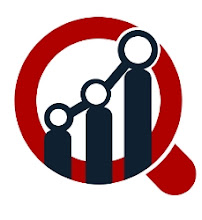France Agricultural Fumigants
Market: Protecting Crop Health and Quality
Molluscicides
Market reached a value of USD 0.5 billion in 2022 and is expected to reach USD
1.06 billion by 2032. This translates to a promising compound annual growth
rate (CAGR) of 8.69% over the forecast period (2023-2032).
·
Rising
Threat from Molluscs:
Snails and slugs are voracious pests that can devastate crops, particularly
high-value horticultural crops. As these pests become more prevalent, the
demand for effective control methods like molluscicides increases.
·
Growth
in Agribusiness:
The agricultural sector, especially in developing countries, is experiencing
significant growth. This expansion is accompanied by an increased focus on
protecting crops from pests and diseases. Molluscicides offer a valuable tool
for farmers to safeguard their yields and ensure food security.
In
France, a country celebrated for its culinary heritage and agricultural
excellence, the agricultural fumigants market plays a vital role in protecting
crop health and quality, particularly in the face of pest and disease
pressures. Fumigation, as a pest management strategy, is widely employed by
French farmers to control a variety of pests and pathogens, ensuring the
success of diverse crops ranging from grains and fruits to vegetables and
ornamental plants.
One
of the primary drivers of the agricultural
fumigants market in France is the country's diverse
agricultural landscape, characterized by vineyards, orchards, cereal crops, and
specialty crops such as lavender and truffles. Each of these crops faces unique
pest and disease challenges, making fumigation an essential tool for protecting
crop health, yield, and quality throughout the production cycle.
Moreover,
the quality and reputation of French agricultural products, from wine and
cheese to fruits and vegetables, depend on stringent pest management practices
and adherence to quality standards. Fumigation plays a crucial role in ensuring
compliance with these standards, helping farmers meet market requirements and
consumer expectations for safe, high-quality food products.
Technological
innovation is driving further growth and differentiation in the French
agricultural fumigants market, with advancements in fumigation equipment,
application methods, and formulation technologies improving the efficacy,
safety, and environmental sustainability of fumigation practices. From
precision application techniques to eco-friendly fumigant formulations, farmers
have access to a range of tools and technologies to optimize their pest
management strategies while minimizing environmental impact.
Looking
ahead, the future of the agricultural fumigants market in France lies in
innovation, sustainability, and adaptation to evolving pest pressures and
regulatory requirements. By embracing new technologies and practices that
enhance the efficacy and environmental sustainability of fumigation, French
farmers can continue to protect crop health and quality while ensuring the
long-term viability of agricultural production in France.
About US
At
Market Research Future (MRFR), we enable our customers to unravel the
complexity of various industries through our Cooked Research Report (CRR),
Half-Cooked Research Reports (HCRR), Raw Research Reports (3R), Continuous-Feed
Research (CFR), and Market Research Consulting Services. MRFR team have supreme
objective to provide the optimum quality market research and intelligence
services to our clients. Our market research studies by products, services,
technologies, applications, end users, and market players for global, regional,
and country level market segments, enable our clients to see more, know more,
and do more, which help to answer all their most important questions. To stay
updated with technology and work process of the industry, MRFR often plans
conducts meet with the industry experts and industrial visits for its research
analyst members.
Contact us:
Market
Research Future (part of Wantstats Research and Media Private Limited),
99
Hudson Street,5Th Floor, New York,10013, United States of America
Sales: +1 628 258 0071 (US)
+44 2035 002 764 (UK)
Email: Sales@marketresearchfuture.com







.jpg)